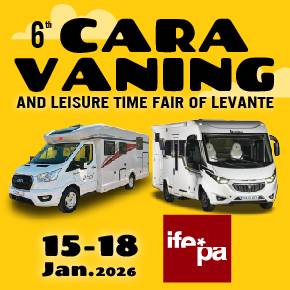The Museo Azul de la Semana Santa in Lorca; MASS
Lorca is famed for the embroideries featured in the annual biblical processions in Easter Week (Semana Santa)
One of the most impressive and ebullient expressions of faith which can be seen anywhere in the Region of Murcia is the remarkable collection of embroidered pieces which the Lorca brotherhoods continue to expand and parade during the annual Easter week (Semana Santa) processions in the City of Lorca.
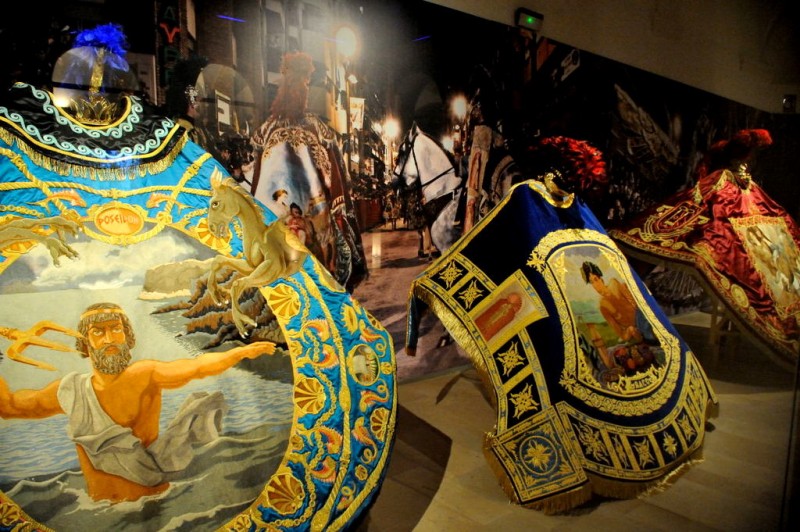
The "Biblical processions" as they are generally known, are unique in Spain, and the extraordinary collection of embroideries can be seen in four museums, all of which are within easy walking distance of one another. Anyone with an interest in art, history or needlework will find a visit to these locations a deeply rewarding and enriching experience, and those fortunate enough to have watched the biblical processions during Semana Santa will also appreciate the chance to see these astonishing works of art, each of which has taken thousands of hours to create, up close, as well as see the workroom in which yet more of these incredible pieces are being created.
The Museo Azul de la Semana Santa (MASS) contains nearly 300 of the most valuable items belonging to the Hermandad de Labradores, widely known as "The Blues" or the "Paso Azul" and is an extensive and beautifully laid-out museum which incorporates the work rooms of the brotherhood and its chapel.
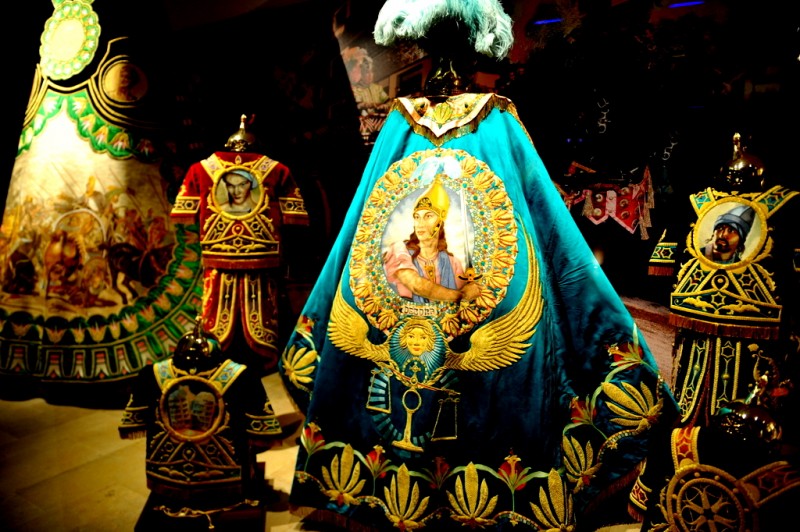
Each of the brotherhoods in Lorca has its own religious images which are paraded through the streets during the Easter processions, but over the centuries the Semana Santa processions in Lorca gradually became a fiercely contested competition to see which of the two largest and oldest brotherhoods, the Hermandad de Labradores and the Real e Ilustre Archicofradía de Nuestra Señora del Rosario, could create the most spectacular expressions of faith. This intense rivalry between the Paso Azul (the Blue brotherhood) and the Paso Blanco (the White brotherhood) continues today as the skilled embroiderers work throughout the year to create increasingly spectacular artworks, as well as maintaining and restoring the existing collection.

The MASS is the museum run by the Blues to show off the incredibly elaborate embroidery which has been created to adorn the figures in their renowned Biblical Cortège, as well as other items which have been incorporated into the processions and which during Easter Week adorn horsemen, statues, Roman legions and a host of figures from the Old and New Testaments.
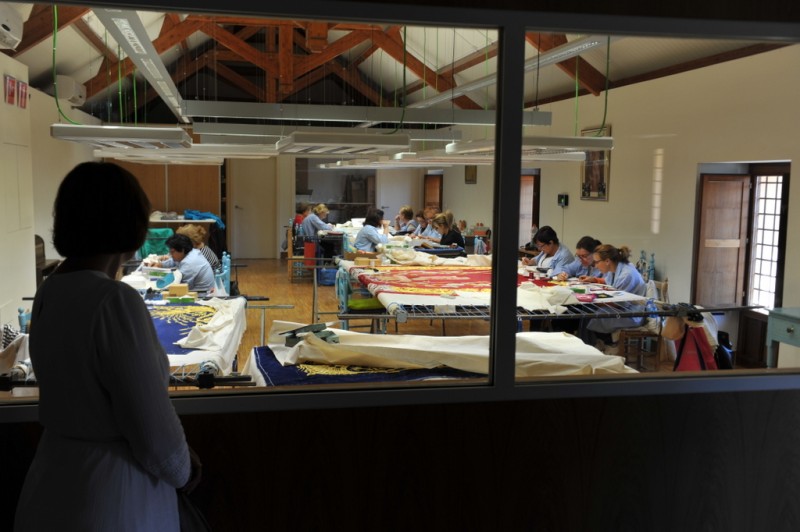
Even those who are not driven by religious fervor and have not the slightest idea about needlework cannot fail to be impressed by the sheer expense and effort which has gone into producing an astonishing collection of embroidered pieces, ranging from cloaks which measure several metres across to standards, embroidered capirotes (the tall pointed hats worn by penitents) and robes, all highlighted with minutely detailed gold thread.
This is the story of the Bible re-told on an epic scale, and an idea of how seriously the whole event is taken in Lorca can be gained from the fact that the gold thread and specially dyed silks used in just one cloak can cost thousands of euros as well as thousansd of hours; some of the sets of embroideries have taken years to complete.
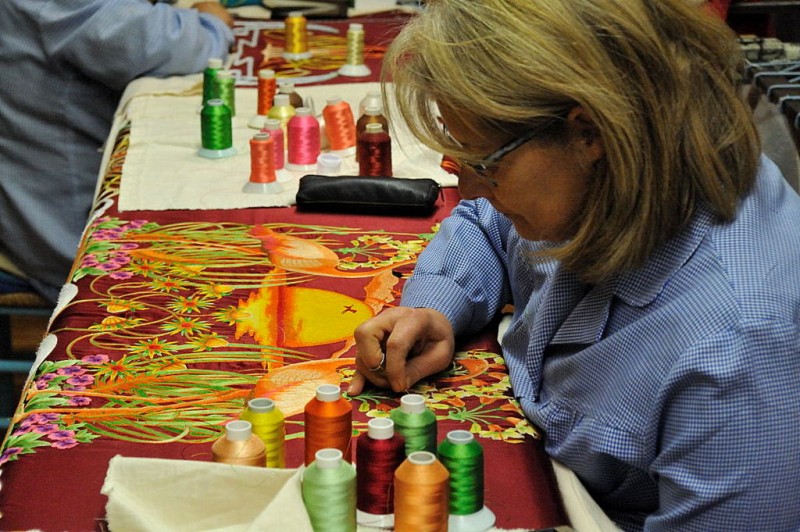
The history of the Paso Azul
Like their arch-rivals the Paso Blanco, there is circumstantial evidence to suggest that the brotherhood of the Paso Azul was formed in the 16th century, but the first known documented reference to the Hermandad de Labradores Lorquinos under the advocation of Nuestra Señora la Virgen de los Dolores dates from 1752.
However, it was not until 1855 that the Paso de Nazarenos Azules which gives the brotherhood its popular name was formed, and it was around the same time that work began on the elaborate embroideries which have become a defining characteristic of the Semana Santa celebrations in Lorca.
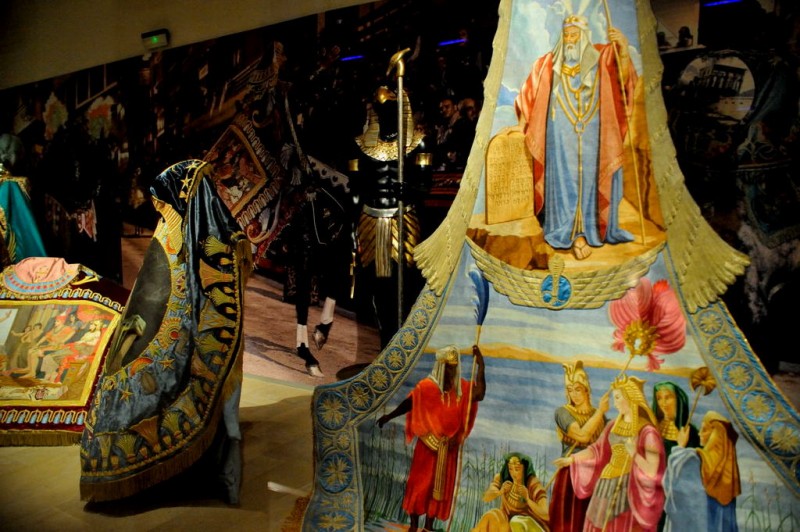
The home of the MASS
The Museo Azul de Semana Santa in Lorca is housed inside a building which has been used for various different purposes over the last 450 years. It was built during the prosperous boom years of the 16th century in Lorca by monks belonging to the Franciscan Order, and was started in 1561, just 28 years after the beginning of work on the Excolegiata de San Patricio in the Plaza de España.
On the walls of one of the rooms the vestiges of 16th-century sundial clock designs created by the Franciscan monks can be seen, and there are also traces of the occupation by Napoleon’s troops during the Peninsular War in the early 19th century.
In the 20th century the building was pressed into service as a hospital, and in 1982, along with the neighbouring Church of San Francisco, which is the religious home of the Paso Azul, it was awarded National Historic Monument status.
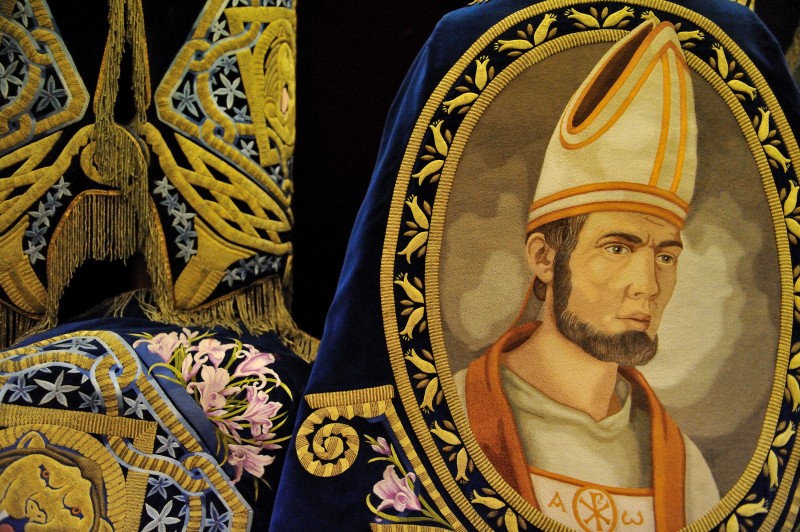
The group of buildings belonging to the Antiguo Convento de San Francisco and the Pazo Azul suffered extensive structural damage during the earthquakes which hit Lorca on 11th May 2011, but following an investment of over three million euros in restoration and rehabilitation a new MASS museum, with a floor area of 3,500 square metres, was officially opened on May 29 2015, and is fully accessible for those of limited mobility, with a lift bringing the upper floors within easy reach.
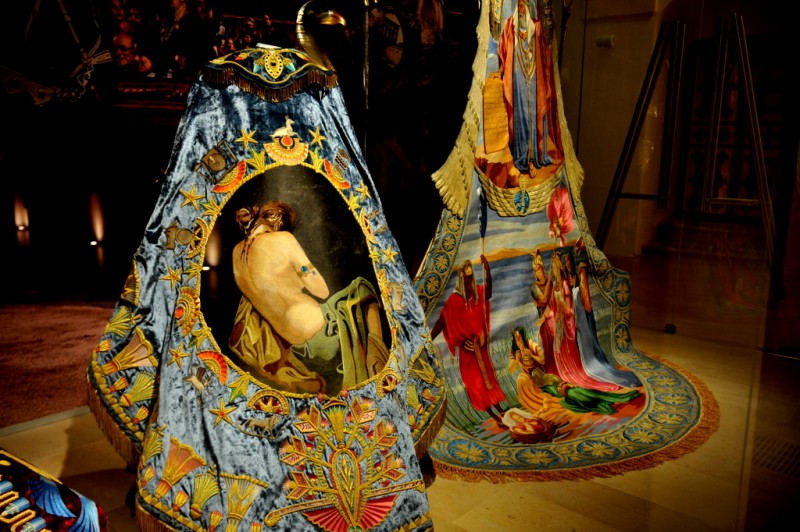
The exhibits
Among the numerous items on display at the MASS is the oldest embroidered shawl in the city of Lorca, and it is also possible to see the very latest additions to the Paso Azul’s collection.
Six of the embroideries belonging to the brotherhood have been declared Items of National Cultural Interest, and the exhibition rooms feature various images showing the biblical processions of the 20th and 21st centuries.
It is advisable to begin a visit to the MASS by taking the lift up to the second floor and first visiting the workroom where the embroiderers are at work repairing existing embroideries and creating new pieces. This provides an insight into the techniques used and clearly brings into focus the exhibits that are to be seen in the rest of the museum, providing a clearer insight into the scale of the task undertaken and the amount of work that goes into every piece, as well as an appreciation of the skill of the embroiderers involved.
From here, visitors work down through the three levels of the museum, starting at the top with the earliest standards in the collection and concluding the visit on the ground floor where some of the most impressive newer pieces in the collection are framed in a central courtyard.
Don't miss the chance to see inside the chapel of the brotherhood, both from above and below and leave sufficient time to view the video footage showing some of the embroideries parading during the Semana Santa processions.
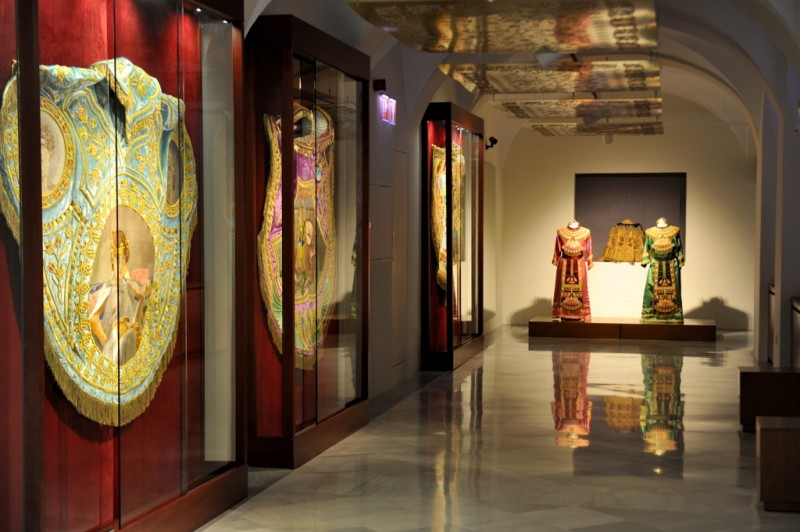
Practicalities of visiting the MASS in Lorca
The opening hours from Monday to Saturday are 10am until 2pm and between 5pm and 7.30pm. And on Sundays, the opening hours are 11am to 2pm. The opening hours may vary in the summer. Over the museum remains closed on most bank holidays, including December 25, January 1 and January 6.
Admission costs 3€, every cent of which goes into creating and maintaining the artistic and historic heritage of the brotherhood and maintaining the museum.
Guided tours can be organized for group visits by prior arrangement in Spanish, English and French.
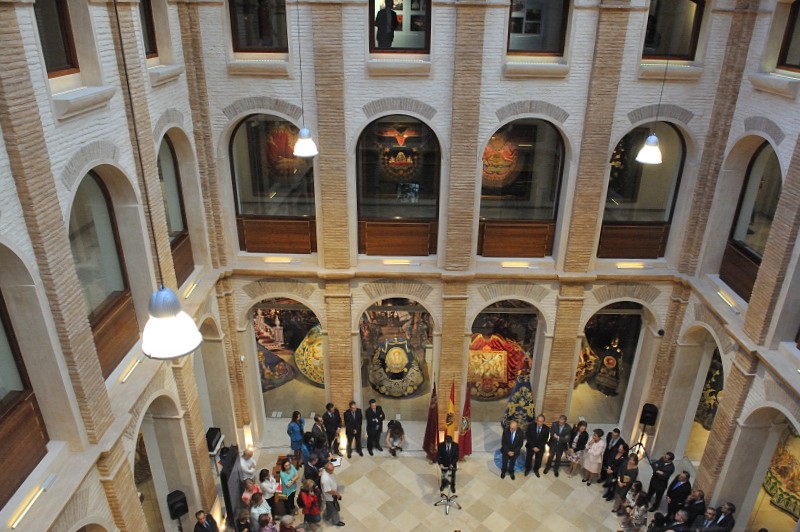
Accessibility
Visitors to this museum will find it very friendly towards those with limited mobility. All of the floors are accessed via a lift, there are ramps everywhere and every effort is made to welcome and accommodate visitors with limited mobility.
It is also easy for drivers to pick up and drop off passengers and there is parking nearby.
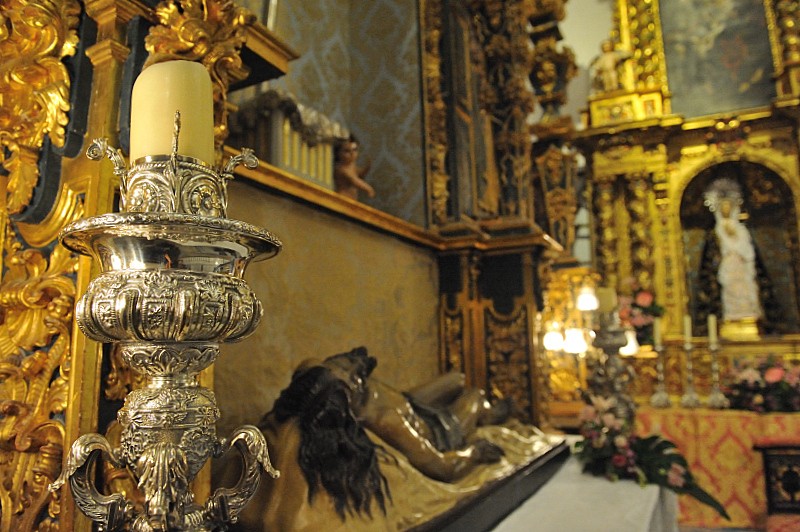
Combined entry discount (wristbands are temporarily unavailable, December 2021)
Those planning to visit several locations in Lorca are strongly advised to purchase a wristband (pulsera) from the Tourist Information Office, as it offers superb value, particularly for those able to spend time visiting all of the principal attractions. Priced at only 6.50 euros, it is valid for entrance to the La Merced visitors’ centre, Lorca castle and the four main Semana Santa and embroidery museums; the MuBBla belonging to the Paso Blanco, the Museum of the Paso Azul, the MuPaEn belonging to the Paso Encarnado and the Nicolás Salzillo “Il Maestro” museum of the Paso Morado.
In addition, significant discounts are offered on the guided tour of the Jewish quarter and the synagogue in the castle and the wristband is valid for one entry to each, and without an expiry date, so visitors can return at their leisure to visit each of the attractions over a period of time. It's fantastic value! Click for full information about the wristband offer.
Tickets for the Semana Santa biblical parades
Tickets are sold by the brotherhoods directly via their web pages or directly from the offices and museums of the Cofradías.
The seat prices vary according to the position within the stands and in the street, with the cheaper tickets being those closest to the entry and exit points of the processions and the higher-priced seats located in the centre of the stands. This is because the horses and carriages run set distances, so those seats in the middle have a better view of the more spectacular runs. Click for the subject heading of Semana Santa Lorca to see the current ticketing information and further details about Semana Santa in Lorca.
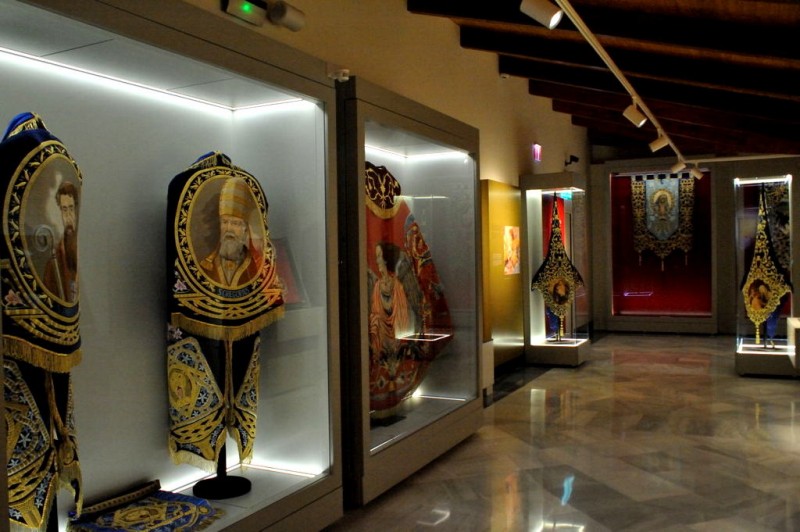
Location
The Museo Azul de la Semana Santa is situated on the corner of Calle Nogalte and Calle Cuesta de San Francisco, next to the Iglesia de San Francisco (telephone 968 472 077 email info@pasoazul.com).
Click for further information about visiting Lorca, including what's on agenda, what to visit, opening hours, tourist information etc: LORCA TODAY
















